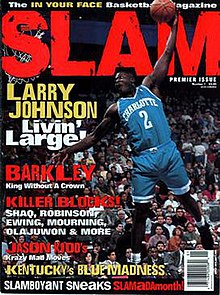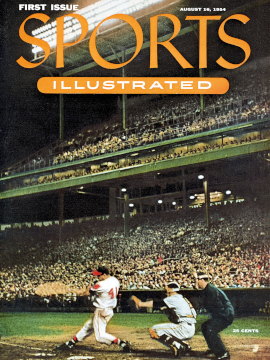
Sports Illustrated (SI) is an American sports magazine first published in August 1954. Founded by Stuart Scheftel, it was the first magazine with a circulation of over one million to win the National Magazine Award for General Excellence twice. It is also known for its annual swimsuit issue, which has been published since 1964, and has spawned other complementary media works and products.

New Musical Express (NME) is a British music, film, gaming, and culture website and brand. Founded as a newspaper in 1952, with the publication being referred to as a 'rock inkie', the NME would become a magazine that ended up as a free publication, before becoming an online brand which includes its website and radio stations.

Slam Dunk is a Japanese sports manga series written and illustrated by Takehiko Inoue. It was serialized in Shueisha's shōnen manga magazine Weekly Shōnen Jump from October 1990 to June 1996, with the chapters collected into 31 tankōbon volumes. The story follows a basketball team from Shōhoku High School, located in the Shōnan area of Japan.

Soap Opera Digest was a weekly magazine covering American daytime soap operas. It featured onscreen and offscreen news about the series, interviews with and articles about performers, storyline summaries and analysis, and related promotional information. Founded in 1975, the magazine historically included certain prime time soap operas in its coverage as well.
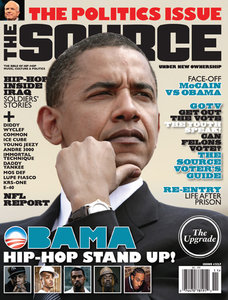
The Source is an American hip hop and entertainment website, and a magazine that publishes annually or semiannually. It is the world's longest-running rap periodical, being founded as a newsletter in 1988 by David Mays.

MotorTrend is an American automobile magazine. It first appeared in September 1949, and designated the first Car of the Year, also in 1949.

Vibe is an American music and entertainment magazine founded by producers David Salzman and Quincy Jones. The publication predominantly features R&B and hip hop music artists, actors and other entertainers. After shutting down production in the summer of 2009, it was purchased by the private equity investment fund InterMedia Partners, then issued bi-monthly with double covers and a larger online presence. The magazine's target demographic is predominantly young, urban followers of hip hop culture. In 2014, the magazine discontinued its print version.

Giant was a men's magazine based in New York City geared to the urban music market. It began in October 2004 as a bimonthly publication catering to the interests of 20-something men, focusing on pop culture including reviews of video games, movies, fine tobacco, music, everyday happenings and celebrity interviews.

O, The Oprah Magazine, also known simply as O, is an American monthly magazine founded by talk show host Oprah Winfrey and Hearst Communications. In 2021, Winfrey and Hearst rebranded it as Oprah Daily.
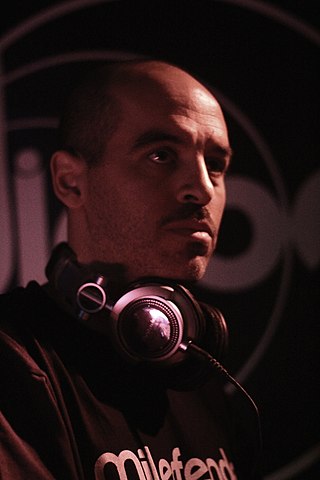
Robert "Bobbito" Garcia, also known as DJ Cucumber Slice and Kool Bob Love, is an American DJ, radio host, author, and member of the Rock Steady Crew. He is known as a former co-host of hip hop radio show The Stretch Armstrong and Bobbito Show, alongside Adrian "Stretch Armstrong" Bartos, from 1990 until 1999. He later moved to Washington, D.C., where he currently hosts a new podcast on NPR called What's Good? alongside Bartos. Garcia was the announcer for the video game NBA Street Vol. 2.

NBA Street V3 is a basketball video game developed by EA Canada and published by Electronic Arts under the EA Sports BIG label. It is the third installment in the NBA Street series, and originally released in February 2005 for GameCube, PlayStation 2, and Xbox. The game was ported to PlayStation Portable under the title NBA Street Showdown.
Mediaweek is an online trade website serving the Australian media industry. It provides news regarding the Australian newspaper, television, radio, magazine and outdoor advertising industries.

Motorcyclist is an American online motorcycling magazine that was published in monthly print format for 107 years, from 1912 to 2017, then moving to six issues per year, until ceasing print publication and becoming online-only in 2019. Since 2013, it has been owned by Bonnier Group and headquartered in Irvine, California.
Sport was an American sports magazine. Launched in September 1946 by New York–based publisher Macfadden Publications, Sport pioneered the generous use of color photography – it carried eight full-color plates in its first edition.

Bravo is the largest teen magazine within the German-language sphere. The first issue was published in 1956.
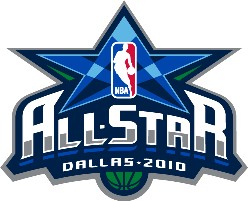
The 2010 NBA All-Star Game was an exhibition basketball game that was played on February 14, 2010, during the National Basketball Association's (NBA) 2009–10 season. It was the 59th edition of the NBA All-Star Game, and was played at Cowboys Stadium in Arlington, Texas. The Eastern Conference defeated the Western Conference, 141–139. The East's Dwyane Wade, who recorded 28 points on 75% shooting, 11 assists, 6 rebounds and 5 steals, was named as the All-Star Game Most Valuable Player. This was the second time that the Dallas/Fort Worth metropolitan area had hosted the All-Star Game; the area had previously hosted the event in 1986. Dallas was awarded the 2010 All-Star Game in an announcement by commissioner David Stern on October 30, 2008.

Wax Poetics is a global music platform for music collectors, with its roots as a music magazine dedicated to vintage and contemporary jazz, funk, soul, Latin, hip-hop, reggae, blues, and R&B in the crate-digger tradition; the name of the magazine is itself an allusion to vinyl records. Its first incarnation was in regular circulation between 2001 and 2017.
Mediaweek was a New York–based trade magazine that published from 1991 to 2011. The magazine was initially focused on the media buying and selling communities, but later expanded to cover all aspects of media.
Dime Magazine is an American basketball magazine that was created by Patrick Cassidy and Josh Gotthelf and began circulation in 2001. The magazine publishes six issues a year for its worldwide readership, as well as a handful of editions of Dime China, a Chinese-language version consisting of regular Dime content translated from English and original content from editorial staff in China. It makes an appearance as an endorsement in NBA 2K12, and NBA 2K13. It is owned by Uproxx, itself a subsidiary of Warner Music Group.

ESPN NBA Basketball is a 2003 basketball simulation video game developed by Visual Concepts and published by Sega. It is the fifth installment in the NBA 2K franchise and the successor to NBA 2K3. It was released in 2003 for PlayStation 2 and Xbox. Allen Iverson is the cover athlete of the game. ESPN NBA Basketball is the predecessor to ESPN NBA 2K5 in the NBA 2K series. It is the penultimate NBA 2K game before being sold by Sega company to form 2K Sports. It is also the first game to feature the ESPN logo full-time and the only game not to feature "2K" in its title, but was instead featured "2K4" on the cover art.
